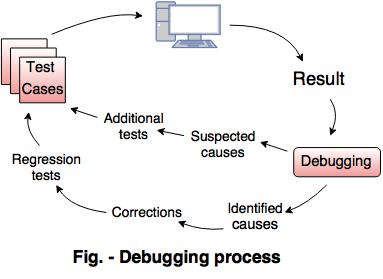
| White-Box Testing | Black-box Testing |
|---|---|
| White-box testing known as glass-box testing. | Black-box testing also called as behavioral testing. |
| It starts early in the testing process. | It is applied in the final stages of testing. |
| In this testing knowledge of implementation is needed. | In this testing knowledge of implementation is not needed. |
| White box testing is mainly done by the developer. | This testing is done by the testers. |
| In this testing, the tester must be technically sound. | In black box testing, testers may or may not be technically sound. |
| Various white box testing methods are: Basic Path Testing and Control Structure Testing. | Various black box testing are: Graph-Based testing method, Equivalence partitioning, Boundary Value Analysis, Orthogonal Array Testing. |